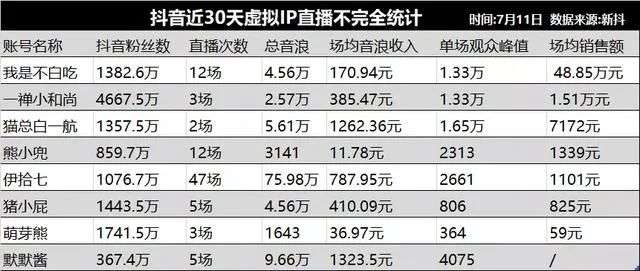://img.36krcdn.com/20200721/v2_af41fe9d85f34416ae62ed975561b592_img_000″ data-img-size-val=”1080,675″>
The most famous and most vigorous of all virtual idols is probably the virtual singer Hatsune Miku developed and produced based on the VOCALOID (electronic music production speech synthesis software) synthesis program developed by Yamaha. She debuted in 2007 and held 40 concerts around the world on her tenth anniversary. Japan’s Nomura Securities has estimated that the amount of consumption related to Hatsune Miku has long exceeded 10 billion yen.
Hatsune Miku is a sound source library and virtual image developed by CRYPTON FUTURE MEDIA (hereinafter referred to as “C Company”). The initial setting is a 16-year-old girl wearing a short skirt and two lush green ponytails. The sound source sample comes from Japanese voice actress Saki Fujita.
But the official only provided the sound library and initial image. In the end, it was the Japanese otaku who performed miracles vigorously and gave the paper man the soul of mankind.
The birth time of Hatsune is catching up with the rapid development of Niconico animation and Pixiv, the two major doujin platforms in Japan. The company C publicized the use of Hatsune as a trial demo on its official website, and was transferred to Niconico animation by Nico users. Several works created by Yinyuan, “Song of Onion”, “World is Mine” and “Thousand Sakura” are on fire.
Fan-creating based on Hatsune’s image gradually became popular at Station P, which reversed the sales of Hatsune. In just two weeks, it sold more than 3,500 copies, and a year later, it sold 42,000 copies. At that time, the sales of works of the same type were often difficult to exceed 1,000.
By the way, BiliBili’s name was called “MikuFans” before Xu Yi, the founder of Station B, had been addicted to “A Scientific Super-Electromagnetic Gun” before he changed his website name, which means Miku Fans, which means Hatsune Miku fans.
On March 17, the number of captains in the live broadcast room of Station B of Comet Star Street exceeded 1,000, becoming the fourth anchor in the history of station B and the second Vtuber with a thousand-man fleet ( The first is Shen楽めあ). The Rainbow Club model is similar to AKB48, spreading the net, speculating CP, and establishing an ecosystem. Established in May 2017, it has more than 100 Vtubers. This time, Cai Ming’s virtual idol project is part of the VirtuaReal project in cooperation between Station B and Rainbow. After the virtual idols arrived in China, their monetization methods have also evolved with the times, and live broadcasts have been launched. For example, Luo Tianyi and Hatsune Miku went to Taobao and Tmall one after another. It was once rumored that Luo Tianyi’s pit fee was as high as 900,000 yuan. From the media Poison Eye has counted Douyin’s recent virtual IP live broadcast income. The head IP “I don’t eat for nothing” uses “eat” as the entry point to bring the goods. The average sales of goods in the past 30 days is 488,400. . The investment in the field of domestic virtual idols has also emerged in the past two years. Xiangmofa Technology was established in January 2018 and has currently completed two rounds of financing totaling RMB 100 million. It mainly promotes virtual live broadcast and offline interactive products and solutions. And Mega Technology, which provides technical support for virtual anchors and MCN operations, has also completed a round B financing of 100 million yuan in the past period of time. Other companies in the industry chain include virtual idol technology service provider Wanxiang Culture, Yishiqi, which incubates virtual idol IP, and virtual idol live broadcast platform kilakila. At the beginning of 2019, more than a dozen companies including Weibo, Kela Kla, and Qiguang Films jointly initiated the establishment of a virtual idol development fund. It is said that they will invest 100 million yuan in funds and resources to support more than 1,000 high-quality content IPs and discover Industry outstanding talents and quality projects. Giant Network announced last year that it would spend 100 million yuan to enter the virtual idol market, launching its first virtual anchor MenheraCHan; iQiyi launched the 6-person idol group RiCH BOOM, and is also expected to launch a variety show “Super Dimensional Idol”. However, if you take the line of an entertainer, the effect of the performance is always a question>Luo Tianyi at the bilibili party in 2019 Rainbow Club, a second-generation idol, mainly relies on Live2D modeling technology and mobile surface capture technology. Compared with the later two-dimensional Vtuber, such as Kizuna Ai, Hui Yeyue, and Mirai Ming, who have rich physical expressions, the members of “Rainbow Club” are “paper people” with only expressions and voices, and they are not visually dominant. Kizuna loves real-time interaction with fans through technologies such as real-time rendering, dynamic capture, face recognition and character modeling, combined with character action performance behind the virtual scene and synchronized voice actors dubbing. However, although the technical difficulty of each generation of virtual idols is different, in the era when they first appeared, they were all real and high investment. Not only that, the difficulty of virtual idol operation lies in the grasp of “personal design” and the charm of the characters displayed by “people in the middle” through performances. There are rumors that the cultivation of a virtual idol requires an investment of nearly 100 million yen (about 6.54 million RMB) in the early stage, including content production, purchase of motion capture equipment, voice actors, etc., and the training period takes almost half a year. While investment is getting higher and higher, competition is also intensifying, traffic is divided up, appearance fees and advertising fees are constantly being kept down. According to a financial data from Kizunai operating company Activ8 last year, their final financial report for the August 2019 period was 675 million yen. There are a total of 52 virtual idols under Activ8. Except for the head love, there are not many other virtual idols as a whole. About a quarter of the virtual idols have less than 10,000 fans. Moreover, due to the conflict between the company and Kizuna Ai, the number of fans of Ai Jiang has fallen sharply recently. In April this year, Active8 completed a 1 billion yen financing to develop a real-time VR system and provide VR content compatible with multiple devices. The lead investor Gumi is an investment madman in the VR and AR fields, and has participated in 14 virtual idol companies including ZIG, Unisonlive, mikai, FAV, ActEvolve, and Unbereal. However, according to Gumi’s 2019 financial report, its XR division (AR+VR+MR) has an operating loss of 400 million yen. It lost even more sharply the year before, 460 million yen. So, if you look at the Japanese market and calculate the early-stage input to output ratio, you might have to be more cautious when evaluating the commercial prospects of virtual idols. It’s just that, in the face of the exponentially developing technology and entertainment market, blood licking happens every day. Reference material:03. So is operating a virtual idol good business?


